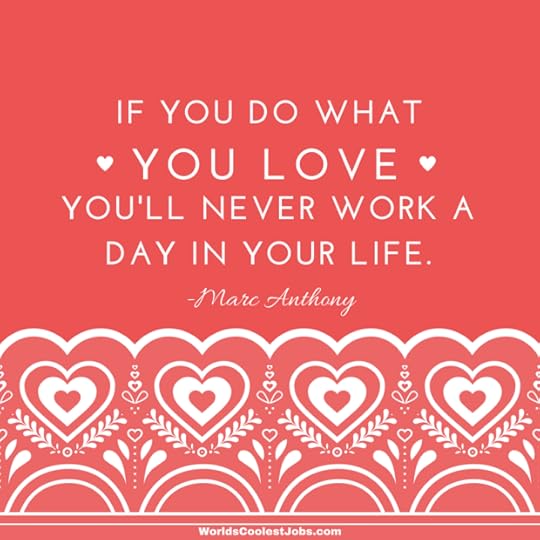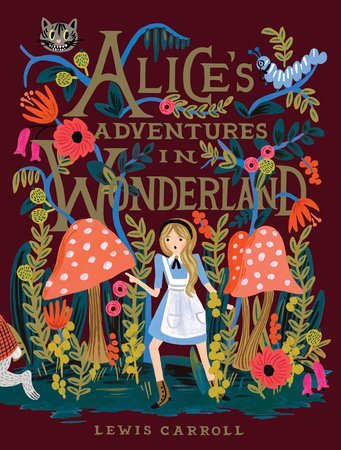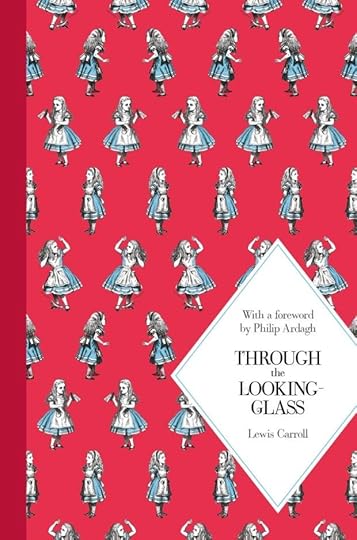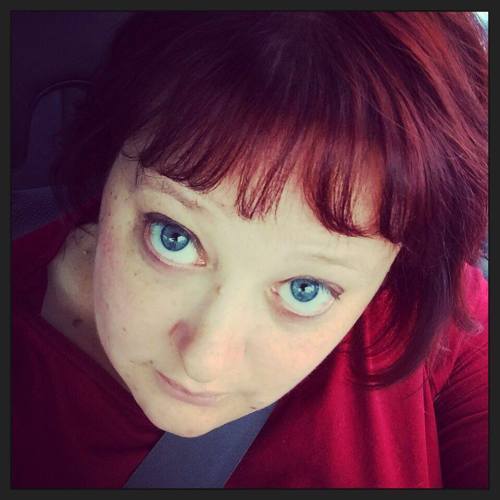Laura Roberts's Blog, page 31
March 21, 2017
“Social malaise” or “shit happens”? #52essays2017
I used to live in Montreal, so I like to keep tabs on the city’s big news. Recently, there was quite a hubbub when 300 cars were stranded overnight on a Quebec highway, due to a snowstorm. People kind of lost their minds over this, and now the inevitable “think piece” from Maclean’s has arrived.
After reading the article, I can’t say I agree with this author’s conclusions. Maybe it’s because I, too, have survived a night stuck on a highway in my car, after a tractor-trailer jackknifed on the road up ahead of us. Granted, I didn’t get frostbite nor die. My car wasn’t towed. I didn’t have to walk miles to the nearest exit to try to find shelter from the storm. But a similar event did occur, once upon a time, outside of Chicago back in the 1990s. (It may have even been 1999 – billed as one of Chicago’s “3 Worst Blizzards” in this article.)
At the time, it was quite an inconvenience. A frustration. Not so much a worry about whether or not everything would eventually be righted, and the world turned back to normal, but certainly there were questions like “How could this happen?” and “What kind of a society can’t figure out how to keep a highway going in the winter?” I mean, it’s not like Chicago doesn’t experience snow every single year, right?
My take on this story is that the author is promoting a lot of unnecessary fearmongering, trying to prey on people’s concerns about a more disconnected society, where people really do not give a damn about one another. Classic dystopian visions, right?
Honestly, my response is that shit happens. Not to be too glib, but it really does. Every day. All the time. Usually when you least expect it, when you’re least prepared for it, and when you’re most vulnerable. It sucks, but it doesn’t mean society is about to collapse, or that people don’t actually care about one another – although I can certainly understand and identify with that feeling, living in a country currently run by the World’s Biggest Man-Baby, where every day it seems like he is about to start WW3.
In case you’re curious, here’s what happened when I got stuck on a highway in a snowstorm:
I was with my dad, driving back to our home in Cincinnati after having taken a tour of the University of Chicago in said snowstorm. It was a pretty small tour group as I recall… I think my dad and I may have been the only brave souls to turn up that day. Being originally from the Chicago area, I certainly wasn’t afraid of the snow, and my dad will never let the weather stop him from doing anything.
After the traffic suddenly ground to a halt, we wondered what the heck was going on, and turned the radio to a news station to discover that the traffic was backed up due to an accident up ahead. There was an overpass exit up ahead, so we maneuvered into the off-ramp and went inside. The overpass contained a couple of fast-food joints, some restrooms, and a gas station. We didn’t need any gas, so we got something to munch on, and settled down at a table. There were various people talking about the traffic jam, and we looked out the windows over the highway, trying to see if we could spot the mess up ahead.
We couldn’t.
We stayed there for a while, until we saw the traffic start to move again. Optimistically, we got back into the car and decided to try to head for an upcoming exit, which led to another highway. My dad had been consulting his maps from the glove box, and said the other road would take us a bit out of the way, but would ultimately allow us to bypass the mess and continue on towards home.
Somehow or another, once we got back onto the highway, my dad decided not to take the exit we’d agreed upon, saying that it looked like the road ahead was clear and we could just keep on going. So we did, until once again the traffic ground to a halt.
Obviously, the real jam had still not been cleared, because cars were still basically parked on the highway.
I can’t remember if we had consulted the radio’s news again or not – remember, this was back before the days of instant cell-phone communications and being able to check the internet for real-time updates about such traffic problems – but we probably hadn’t. So now, we were stuck.
Thanks, dad!
He and I tried to sleep in the car for a bit, as it had gotten quite late in the day, and he would wake up every half-hour or so, turning the heater on for a few minutes to warm us both back up. We had a few blankets in the trunk, and kept our coats on to preserve body heat. I think my dad also gave me his navy blue ear-flap hat, to keep my head warm. Things were not exactly comfortable, and trying to sleep with boots on is not really ideal, but we tried not to complain too much.
Eventually, during one of the “wake up and heat the car up again” rounds, we discovered the road had been cleared up ahead of us. That was sometime around 3 AM. We weren’t sure how far the traffic had been backed up, but since we definitely couldn’t see the truck that was blocking things, it must have been quite a ways. We excitedly tapped on the window to wake up the sleeping driver in the car in front of us, and got back on our way.
When we came to the next exit, this time we took it – both to grab some coffee and warm back up, and to get the hell off of that highway, just in case. The dude in charge of the convenience store and gas station seemed pleased to be doing such brisk business at such an odd hour of the morning. Somebody called me “sir,” because I looked totally disheveled and was wearing my dad’s hat.
We got some coffee and some gas for the car, used their restrooms, and got back on the road again.
Shit happens. Life is what you make of the difficulties that block your path.
You can choose to look at that as a pain in the ass, as a severe fuck-up on the part of probably dozens or hundreds of people, and that’s not wrong. But you can also look at it as an adventure, or a funny story about a road trip you can tell all your friends, at least in hindsight. Right? It’s all in your attitude. And, granted, I am not the Queen of Positivity, but I do try to be realistic about how much of my life is simply out of my control. Getting stuck on a highway in a snowstorm was definitely not Part Of The Plan. But it’s also not The End Of The World.
I’m not trying to say that Quebec doesn’t have its problems, nor that getting stuck on a highway in a snowstorm doesn’t suck. Crumbling infrastructure and unconcerned government officials are two things that surely combined to result in such a mess in the first place. And on top of that, it snows a lot every year. Lots of people in the province have SADD. Tow truck drivers are notorious assholes, no matter what country you live in (hell, their business is basically preying upon folks who are stranded). 50% of your income in Quebec goes to taxes that never seem to come back to the people, whether it’s in the form of better roads, better pay for teachers, better support for new immigrants, or whatever else you might think income taxes should pay for. I could go on.
Hell, here are some parody postcards of Montreal that will give you some idea of what Montrealers hate about their own city!
But to paint Quebec society with such a broadly negative brush is incorrect. I have lived and loved in Quebec, and have also hated the place for its language politics and police, its strangely small-town mentality, its ignorance and arrogance regarding foreigners of all kinds.
Alas, Quebec is not perfect; no place is.
But letting a publication like Macleans point the finger or try to place blame on a “nihilistic” society is not going to help matters.
Shit happens, and we just have to try to deal with it as best we can. We are all flawed individuals. We will all make mistakes. Sometimes, people will lose their jobs for their incompetence. Sometimes, lots of money will be wasted on stupidity, carelessness, and waste. We should all try harder. We can all do better.
To claim that “Quebec is an almost pathologically alienated and low-trust society, deficient in many of the most basic forms of social capital that other Canadians take for granted” is simply irresponsible journalism. What, after all, makes getting stranded in a snowstorm “pathological” or indicative of societal alienation? What do any of the author’s examples (such as cops not wearing “proper uniforms”) have to do with this theory? Weren’t a couple of out-of-town truck drivers actually to blame for this whole incident? So, then, why not lay the blame on wherever these unnamed truckers hail from? Clearly they did not have the public good at heart! They refused to move their trucks, or to let a local tow truck driver help them – clearly, their home provinces are to blame for such “pathological” and “alienated” behavior!
If this all sounds ridiculous, it’s meant to. Trying to place blame on society at large is a futile act. Society is nothing without individuals, and individuals make choices for many different – often unfathomable – reasons. When two truck drivers refuse to have their trucks towed, then insist they cannot move the trucks because the snow has not been cleared properly, well… you’ve got the beginnings of a mess right there. Two people, making choices, are what are really at the heart of this problem. Two people who would not be moved. Two people who probably wish, in retrospect, that they had done something differently.
So, while you can make up any kinds of wild theories you like, I think the real truth of the matter is that sometimes people make mistakes. They fight for the wrong things, and other people get hurt as a result. Thankfully, no one got frostbite or died. The worst that happened here was that several hundred cars were towed, but Quebec says they will not force the drivers to pay associated fines, since circumstances were beyond their control.
And that’s really it. Circumstances are often beyond our control. We like to think otherwise, but we are really just fooling ourselves. This is not to say we should not attempt to control our own lives, our own circumstances, but sometimes there’s simply nothing more we can do.
Shit happens. Let’s deal with it together.
Related Posts
 Create challenges, not resolutions #52essays2017
Create challenges, not resolutions #52essays2017
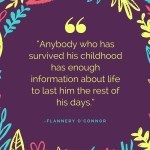 Notes from 20 years of life online #52essays2017
Notes from 20 years of life online #52essays2017
 Uncovering Chicago’s underground #AtoZChallenge
Uncovering Chicago’s underground #AtoZChallengeThe post “Social malaise” or “shit happens”? #52essays2017 appeared first on Buttontapper Press.
March 20, 2017
2017 A to ZChallenge Theme Reveal #AtoZReveal
Today’s the day: It’s time for the annual A to Z Challenge Theme Reveal!
In the past, I have tackled guidebooks to my various hometowns (Chicago, Montreal, San Diego), using the A to Z style to give some unique perspectives on the whole travel guide concept.
But this year, I’m doing something a little bit different.
So far I’ve written two books about finding a career for ReferencePoint Press, a San Diego educational publisher. My first book, Careers in Gaming, debuted in January of this year, and my second book, Careers in Digital Media, is coming this fall. I’m currently working on a third book, called Careers If You Like Music, for the same publisher.
Since I started writing about all of these interesting jobs people have in the video game industry, the world of digital media, and the ever-changing music industry, I asked myself: what do all of these jobs have in common?
The answer is simple: they’re all super cool!
Now, I know you are probably thinking, “But, Laura, how can work be cool?” And that’s a good question, especially since so many people seem to hate their jobs.
Here’s what I think: if you find a job you really love, it will never feel like work. There’s even a saying that has been attributed to everyone from Confucius to Mark Twain to Marc Anthony:
So what does that mean?
It means you need to find one of the World’s Coolest Jobs, so you’ll be able to wake up every day excited to go to work!
And just how will you do that?
Follow along as I take you on a quick tour of 26 awesome jobs, from A to Z, during the month of April. I’ll be posting about my first Cool Job – which starts with the letter A – on April 1st, over at my new blog, WorldsCoolestJobs.com.
Don’t forget to subscribe to the blog so you won’t miss a single post, and I’ll see you there on April 1st!
Related Posts
 Out with the old: Reflections on 2016
Out with the old: Reflections on 2016
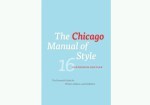 Chicago Manual of Style #AtoZChallenge
Chicago Manual of Style #AtoZChallenge
 Delicious! Celebrate Deep Dish Pizza Day #AtoZChallenge
Delicious! Celebrate Deep Dish Pizza Day #AtoZChallengeThe post 2017 A to ZChallenge Theme Reveal #AtoZReveal appeared first on Buttontapper Press.
February 28, 2017
Top 10 Takeaways: Diane Hinds
Last night I attended the monthly meeting of the San Diego Writers and Editors Guild. The guest speaker was Diane Hinds, a PR expert from the UK. She spoke to the group about how to promote your book as an independent author, and gave us lots of great information – including tips for contacting the media.
Here are my Top 10 Takeaways from her speech:
10 – Indie Authors Lack Respect
Unfortunately, as Jennifer McCartney quotes IndieReader’s Amy Edelman in this Publisher’s Weekly article, “Self-published authors still face a huge lack of respect, both from readers and consumer media.” Indeed, Diane mentioned an author from the UK, Rachel Abbott, who has sold two million books, but is still not considered a “serious” writer because she’s self-publishing. Really? A woman with two million sales isn’t SERIOUS about writing?! I’d say she’s pretty damn serious about marketing, anyway!
So, how can we combat this lack of respect? With PR!
9 – What is PR?
First of all, PR stands for public relations. But what does that mean? It’s all about reputation, and more specifically, the way you are presented to the public by the media. The most important part of PR is third-party endorsements. These give a writer credibility, because they cannot be bought. PR includes editorials, features, news pages, and much more.
8 – Why Not Advertise?
Since the SDW/EG has a dedicated Marketing Support Group that meets monthly, you might be asking “Why not just spend money on advertising?” A great question! Diane points out that PR is free, unlike advertising or marketing, which is all about how much money you spend. Advertising typically shouts at the reader, often yelling “Buy my book!”, which readers tend to ignore. And it lacks credibility, because it’s bought and paid for, rather than earned.
7 – Who is Your Audience?
One of the most important things that authors need to be clear about is who their target audience really is. What are their demographics? What do they read, and where do they shop? Unless you know who you’re writing for, it will be very difficult to properly target your messages.
6 – What is Your Message?
Every author needs a clear, concise message that will help sell their book. What is your message? Ideally, you’ll want to use it on social media to “motivate people online to mobilize offline.”
Focus on your USP: Unique Selling Point. Be sure to avoid jargon, clichés, generalizations, and superlatives. Use key facts and figures to bring your announcement to life. Make sure all the information you present follows journalism’s inverted pyramid, giving the most important information first.
5 – Tools You’ll Need
Here are the tools you’ll need to start contacting the media:
ISBN code
Images and reference images
Company website
Product price
Launch date
Press release
4 – What’s a Press Release?
Your press release is the media’s first introduction to your book. It should be a one page document, sent to media contacts.
So what do you need to include?
Headline: Your succinct message
Body: Relevant details
Notes for Editors: Additional information, with key points in bullet form
Boilerplate: Your name and contact info
3 – Start Locally
Diane advises authors to always start locally, by researching possible contacts. San Diego has a huge number of media outlets, so start compiling a list of radio, TV, print and online sources to contact. (Pst! Here’s a good one, from SanDiego.org.) Remember to work your angles: what message are you sending, and to whom? Compile a database of contacts, and then start calling and emailing.
2 – In Person Is Powerful
What’s better than a prerecorded (or phoned-in) interview? An in-person interview. Any time a TV or radio show asks you to do an interview, see if they’ll let you come into the studio to chat. If the outlet is local, this shouldn’t be too big a deal. If it requires some travel time, make the time. And remember to write off the expenses on your taxes, too.
1 – Lead the Debate!
Diane’s best tip for authors was to “lead the debate.” What does she mean by that? For one thing, target your book’s release date and press releases. Connect them with an event that’s happening, in order to build more steam. An example she gave was to connect a book on the subject of mental health to Mental Health Awareness Week.
Another way to lead the debate is to share your own experiences that caused you to write your book. If you have experienced a mental health challenge that inspired your book, don’t be afraid to talk about it. That personal experience engages readers, and helps them get to know the real you.
Remember to invite, engage, and lead on social media.
What About You?
How will you use Diane’s suggestions to get out and promote your book?
Keep up with Diane on Twitter @Diane_Hinds (using the hashtag #DMHMsgPR), on Facebook, or her website, TheEntertainmentBureau.co.uk.
Related Posts
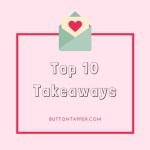 Top 10 Takeaways: Antoinette Kuritz, Founder of the La Jolla Writer’s Conference
Top 10 Takeaways: Antoinette Kuritz, Founder of the La Jolla Writer’s Conference
 Top 10 Takeaways: David Wogahn on Metadata
Top 10 Takeaways: David Wogahn on Metadata
 Top 10 Takeaways: Christina Alexandra
Top 10 Takeaways: Christina AlexandraThe post Top 10 Takeaways: Diane Hinds appeared first on Buttontapper Press.
February 11, 2017
Love Letters: Accountability Group check-in, week 6
It’s the end of the sixth week of 2017, and it’s time for another round of writing accountability. Let’s begin!
Word Counts for 2/4 – 2/10
February 4: 603
February 5: 1,170
February 6: 760
February 7: 765
February 8: 1,180
February 9: 0
February 10: 830
Weekly Total: 5,308 words
Another Thursday zero! This one I’m chalking up to being double-booked at my day job, which meant that I got up at 4 in the morning to get stuff finished by my deadline, and then fell asleep super early before I even had a chance to write up a crappy journal entry.
Weekly Goals
Set: Write 30 pages for the Book In A Week monthly challenge (aka 7,500 words),write a new “Pop Songs” essay, catch up on InCoWriMo and write one letter per day.
Met: None of the above!
Missed: Well, it looks like what I thought would be easily doable goals for this week have, so far, not been achieved. I haven’t written 7,500 words yet (although I still have until Sunday at midnight to do so), nor have I written a new “Pop Songs” essay. I haven’t caught up on InCoWriMo letters, or even written one per day. In short, my goals for this week have so far not been met, and having another Thursday zero is really starting to piss me off.
January Badges
On the plus side, this week I won a couple of badges from the 365 Club! Here they are:


As you scan see, these are the January Monthly Badge (for reaching my word count goal of 1,000 words/day) and the Red Pencil Badge (for 10 hours worth of editing).
Goals for Next Week
Since my goals this week were a little too ambitious – or maybe just not very well scheduled – I’m going to try something different this week. I’m going to make a DAILY list of goals to achieve. Here’s what I’ve got so far…
MON: Finish first draft of chapter 1
TUES: Write a new essay on love letters
WED: Finish first draft of chapter 2
THURS: Write 750 Words first thing in the morning (to avoid another zero!)
FRI: Meet up with the Accountability Group, and write 750 Words
SAT: Write Accountability Check-in post, and attend John Van Roekel’s talk at the Central Library
SUN: Catch up on word count for the week and plan next week’s schedule
What About You?
Got any goals for next week? Have you been tracking your words this year? Need some friendly advice or encouragement? Post your deepest, darkest fears – or just your goals – in the comments section!
Related Posts
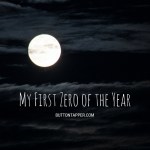 Confronting Zero: Accountability check-in #2017goals
Confronting Zero: Accountability check-in #2017goals
 Looking Ahead: Week 3 accountability check-in
Looking Ahead: Week 3 accountability check-in
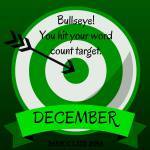 Let’s get accountable! #2017goals
Let’s get accountable! #2017goalsThe post Love Letters: Accountability Group check-in, week 6 appeared first on Buttontapper Press.
February 10, 2017
Writer to Watch: John Van Roekel
Normally, when I see those “Writer to Watch” interviews in glossy magazines, I cynically wonder how much money those authors had to shell out to big-deal publicists to get them featured in said magazine. But recently I was flipping through a local publication and spotted a familiar face. It belonged to John Van Roekel, author of a trio of historical fiction books, and he was being featured as a “Writer to Watch” – chosen by San Diego’s Friends of the Central Library.
“Hey!” I said, “I know that guy!”
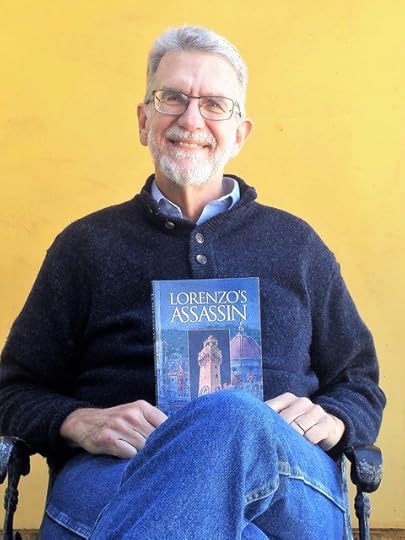
John and I are both regular exhibitors at the new Local Author Spotlight nights, held quarterly at San Diego Writers, Ink. We usually chat about writing and what we’ve been up to since the last meet-up, in between selling books and sipping wine, and he’s a pro at making his elevator pitch sound totally natural. I think that’s because it is totally natural for him; he’s written three novels he was really excited about writing (as well as a fourth, which is a nonfiction collection of his father’s WWII letters), and he loves talking to people about them.
He’s also slated to give a talk at the Central Library next Saturday, February 18th. He promises a “lively talk,” which will be heavy on the storytelling and lighter on the history – and definitely not one of those boring lectures!
So this time I’m not surprised by the Friends of the Central Library’s pick. John really is a writer to watch, and I’d definitely recommend picking up one – or all – of his books if you’re a fan of historical fiction. Even though I don’t normally read this particular genre, I’m curious to read his latest book, Lorenzo’s Assassin, which deals with religion and power in Renaissance Italy. As John puts it, in our interview over at Black Heart:
“After my wife Pam and I visited Italy in 2006, I developed a rabid interest in Rome, both ancient and Renaissance. One day I was listening to an audio lecture about the Italian Renaissance, and the speaker mentioned the ‘Pazzi Conspiracy’ when Pope Sixtus IV ordered the assassination of Lorenzo de’ Medici. After a year of plotting, the professional soldier who was supposed murder Lorenzo in the great Duomo cathedral in Florence decided he could not do it ‘in front of God.’ When I heard that, I thought, ‘Now there’s a story.’ Lorenzo’s Assassin is the result.”
Intrigued? Check out the full interview with John here.
Related Posts
 #HumpDayReviews: My 2015 Year in Review
#HumpDayReviews: My 2015 Year in Review
 Make the most of your writing: join a local writers group
Make the most of your writing: join a local writers groupThe post Writer to Watch: John Van Roekel appeared first on Buttontapper Press.
February 5, 2017
The January Journals: Accountability round-up, week 5
It’s the end of the fifth week of 2017, January’s in the record books, and it’s time for another round of writing accountability. Let’s begin!
Word Counts for 1/28 – 2/3
January 28: 1,708
January 29: 1,356
January 30: 770
January 31: 1,477
February 1: 1,000
February 2: 651
February 3: 770
Weekly Total: 7,732 words
No zeros this week, so I am feeling great about that! (Seriously, is there anything worse than having to write a big fat 0 on your word tracker and face the shame of being a writer who hasn’t written?)
January Total: 33,001 words
My goal was 1,000 words/day, so this means I hit my target and even beat it by 2,001 words, woohoo!
Weekly Goals
Set: Start researching and writing Careers if You Like Music, write essays #4 and 5, continue writing on a daily basis, participate in InCoWriMo – International Correspondence Writing Month.
Met: This week was kind of a bust for me, in terms of accomplishing my set goals. However, I did a lot of journaling, which means I did keep up with my goal of writing on a daily basis, and I wrote two letters for InCoWriMo, too, which is supposed to be a fun project – not a task to complete. It’s important to do things that are purely for your own joy, after all. Not all writing should be about work, and making those distinctions is a personal thing, but it’s been really important to me to figure out where to draw the line.
Missed: I did no research or writing on my music careers book. I did not write any personal essays. Indeed, I think I may have to revise my participation in the #52essays2017 challenge a bit, and simply work on more general essays, because my personal essays are really unpublishable (even in draft state) at this point. I can’t say what I’m thinking or feeling, because it’s all too in-the-moment, and while I typically use my writing to help process my thoughts and feelings, I am certainly not going to unleash the stuff I’ve been dealing with recently until a significant amount of time has passed. Those emotions are just too fresh, and there’s no insight yet because there’s no distance from the subject matter for me.
Additional Wins: Here’s a goal I totally forgot to mention in last week’s post, which I did accomplish this week: I started an actual author newsletter! Instead of just sending people my RSS feed by email, in a weekly digest, I’ve decided to write what I’m calling the Buttontapper Blotter, which will be sent out monthly. It will include links to my blog posts (of course), as well as special bonus material that only subscribers will get to read. I was inspired by the folks at Goulet Pens, who send out the perfectly titled Goulet Communiqué on a weekly basis, sharing their knowledge of fountain pens and stationery with fellow obsessives. If you haven’t yet signed up for the Blotter, click here to get the next issue at the end of this month.
Goals for Next Week
Write 30 pages for the Book In A Week monthly challenge (250 words is considered a page, so that’s a goal of 7,500 words)
Write a new “Pop Songs” essay
Catch up on InCoWriMo, and write one letter per day
What About You?
Got any goals for next week? Have you been tracking your words this year? Need some friendly advice or encouragement? Post your deepest, darkest fears – or just your goals – in the comments section!
Related Posts
 Let’s get accountable! #2017goals
Let’s get accountable! #2017goals
 Looking Ahead: Week 3 accountability check-in
Looking Ahead: Week 3 accountability check-in
 Confronting Zero: Accountability check-in #2017goals
Confronting Zero: Accountability check-in #2017goalsThe post The January Journals: Accountability round-up, week 5 appeared first on Buttontapper Press.
February 2, 2017
People are strange: Some thoughts on Groundhog Day
Groundhog Day has to be one of the absolute weirdest annual events that Americans look forward to each year.
In case you – like most groundhogs – are not acquainted with the reasoning (such as it is) behind this spectacle, the basic gist is that if the official groundhog sees his shadow, we’ll have six more weeks of winter; if not, spring will come early this year.
There are, of course, issues with this methodology.
For most groundhog enthusiasts, the official groundhog is undoubtedly Punxsutawney Phil, reporting from Gobbler’s Knob in Punxsutawney, Pennsylvania. (Cue inappropriate jokes.) Phil’s predictions aren’t always accurate, but he’s been the groundhog go-to for most of the U.S. since 1887. (Just ask Phil Connors.)
Of course for New Yorkers – who delight in being different – the official prognosticator is Staten Island Chuck. Chuck seems to have better insight into the mind of Mother Nature, as his accuracy in predictions is currently at 80%. Just don’t drop the little varmint, like Mayor de Blasio did in 2014… ouch!
But the real question is: why on earth would a groundhog seeing its shadow have any effect whatsoever on the weather? Especially in 2017, when we’ve got meteorologists who have much more scientific measurements and technology to do the job than a cranky, burrowing mammal who’d much rather be sleeping underground than informing a bunch of day-drinking humans about the state of the world’s changing climate?
And yes, Virginia, the climate is changing. Don’t let a bunch of windbag politicians tell you otherwise. Have you looked at the average temperatures across the country for the past five years? (NASA has; check it out.)
Ultimately, the concept of Groundhog Day is more about human traditions than weather forecasting. We goofy humans love a spectacle. And as our society continues to become more and more separated from nature, it seems only fitting that we seek to “connect” with nature in increasingly odd ways. For instance, the groundhog’s handlers have to wear protective gloves in order to force the creature out of its comfortable burrow and out into the enclosure where he will make his “prediction.” The groundhog himself might be grumpy, sleepy, or downright peeved about being prodded from hibernation to perform. Today, Phil was described as “feisty.”
Indeed, as NPR reports:
“His eponymous day seemed to sneak up on Phil, and despite more than an hour of loud music and the adoring shouts of human admirers that preceded the sunrise event, his handlers had to grapple with the groundhog so he could have his moment in the sun (or shade).”
Wouldn’t you be feisty if you had to get out of bed to attend to a bunch of noisy humans, when the rest of your winter is typically spent comfortably dozing in bed?
Furthermore, isn’t it strange that we refer to this creature as both a groundhog and a woodchuck? The same animal is considered both fortune-teller and industrious chucker of wood, but also a nuisance animal due to its incessant burrowing – not to mention its penchant for eating vegetables from people’s gardens.

Hell, doesn’t anyone else find it peculiar that two of Harold Ramis’ best-known movies (both, coincidentally, also featuring Bill Murray) are about the destructive influence of varmints? Caddyshack features mischievous gophers, while Groundhog Day spotlights this glorified marmot. In both films, no one can outwit these rodents, so human behavior must ultimately adapt to the natural world’s influence, rather than nature bending to man’s will. An important lesson for us to learn, still!
In the end, Groundhog Day (or Jour de la Marmotte, as it’s called in French, which sounds quite hilarious when said aloud) is just another excuse for us to ponder our existence, question our intelligence, and wonder why we continue to do the ridiculous things we do.
So… will there be six more weeks of winter? Phil says yes, but Chuck says no. How very apropos!
Additional Reading
Roger Ebert’s review of the film, Groundhog Day, is insightful and will make you want to watch the movie again – if you don’t already watch it to celebrate, at the same time every year!
The Atlantic‘s piece on re-watching Groundhog Day, 20 years after its debut, explores the metaphysical (look it up)
Related Posts Create challenges, not resolutions #52essays2017
Create challenges, not resolutions #52essays2017 Notes from 20 years of life online #52essays2017
Notes from 20 years of life online #52essays2017 Top 10 Takeaways: Jonathan LaPoma on Screenwriting
Top 10 Takeaways: Jonathan LaPoma on Screenwriting
The post People are strange: Some thoughts on Groundhog Day appeared first on Buttontapper Press.
January 29, 2017
First Lines SUNDAY: Alice’s Adventures in Wonderland
Friday (January 27th) was Lewis Carroll’s birthday, and given how far we’ve tumbled down the rabbit hole this week, I thought it might still be fitting to post the “First Lines Friday” piece I had prepared for the occasion.
So, without further ado…
Today’s first lines (and yes, I’ve got two of them!) come from a pair of books by Charles Lutwidge Dodgson, better known as Lewis Carroll.
The first begins like this:
“Alice was beginning to get very tired of sitting by her sister on the bank, and of having nothing to do: once or twice she had peeped into the book her sister was reading, but it had no pictures or conversations in it, ‘and what is the use of a book,’ thought Alice ‘without pictures or conversation?'”
From Alice’s Adventures in Wonderland, it’s rather funny that this is a book about a bored little girl, originally published in 1865 for a trio of bored little girls, which continues to capture the imagination of both children and adults to this day. Blending literary nonsense and fantasy, Dodgson was a mathematician by trade, but wrote this book to please the young daughters of Henry Liddell, all of whom were his boating companions one afternoon.
The book has actually been in the public domain since 1907, which may partially explain its continued popularity, as various artists continue to commit their own drawings of Alice and her quirky companions to paper. Dodgson himself illustrated the very first edition, but political cartoonist John Tenniel was the first professional artist to tackle the project. There are several famous artists who have also drawn Alice, including Salvador Dalí, Ralph Steadman, and Tove Jansson. (I also enjoy the illustrations by Blanche McManus, who was the first American illustrator to take Alice on.)
As you may also know, Alice has plenty of jabs at incompetent officials and British heads of state, which makes it perfect escapist reading for anyone looking to get away from American politics for an afternoon.
And, as with all popular titles, there is a sequel, which begins…
“One thing was certain, that the white kitten had had nothing to do with it:—it was the black kitten’s fault entirely.”
Through the Looking-Glass begins with Alice playing with two kittens, one white (Snowdrop) and one black (Kitty). Instead of being bored by books without pictures and chasing a white rabbit down his hole, in this book she manages to step into an alternate reality by passing through a mirror and into the bizarre reflected world beyond.
It’s in this book that Alice meets the characters Tweedledee and Tweedledum, chess pieces like the Red and White Queens and the White Knight, and the frightening Jabberwocky.
Both books rely on game imagery, with Wonderland referencing a deck of cards and Looking-Glass built around the game of chess.
If you’re looking for both escapism and social commentary rolled up into one, you can certainly do no worse than reading both of Carroll’s creations in an afternoon.
More First Lines
Here are the books previously mentioned in the First Lines Friday series:
1984 by George Orwell
Beautiful Losers by Leonard Cohen
Born A Crime by Trevor Noah
Lolita by Vladimir Nabokov
Matilda by Roald Dahl
What’s YOUR favorite first line?
Leave a comment below and your favorite first line could be featured in an upcoming Friday post!
Related Posts
 First Lines Friday: Matilda #fridayreads
First Lines Friday: Matilda #fridayreads
 First Lines Friday: Beautiful Losers
First Lines Friday: Beautiful Losers
 First Lines Friday: Lolita
First Lines Friday: LolitaThe post First Lines SUNDAY: Alice’s Adventures in Wonderland appeared first on Buttontapper Press.
January 28, 2017
Twitler’s first week (and an Accountability Group check-in)
It’s the end of the fourth week of 2017, and it’s time for another round of writing accountability. Let’s begin!
Word Counts for 1/21 – 1/27
January 21: 875
January 22: 0
January 23: 765
January 24: 1,735
January 25: 820
January 26:0
January 27: 360
Weekly Total: 4,555 words
I have to be honest here… I have been actively avoiding writing for the past couple of days, because I am genuinely scared of what has happened in the first week of Trump’s presidency. All of it is designed to turn the U.S. from a free to a fascist nation, and it’s all happened in the space of just five days.
That is utterly terrifying.
It’s hard to even write this post, because for the first time in my life I am genuinely afraid to write and post things on my own website, under my own name. I’ve never been afraid to write or speak my mind before, because I have always trusted that the American government was NOT run by a dystopian tyrant who could simply throw me in jail for anything I might write or say against him. But ever since the Predator-in-Chief (h/t to Jane Fonda for this apt title) took office, things have been different. Free speech no longer feels guaranteed. And I have been avoiding writing this week, because it doesn’t feel safe to express those opinions anymore.
I have been sitting here at my computer, trying to write, but held back by the threat of what might happen if I push “publish.”
I have started – but not finished – several essays. Some have explicitly addressed these issues, and my hatred for Trump and his evil agenda. Others have been on topics unrelated, but I have abandoned them because it felt frivolous to write about something like music or even love in the face of such genuine hatred. Trump has the thinnest of skins, and he continues to dismantle everything our country stands for because of the names people have called him online. What kind of behavior is this for the President, the leader of the free world?
Here are just a few of the absurdities and abuses that have happened this week in the Trump White House:
He continues to tweet from an unsecured Android phone – even though Hillary Clinton was punished, repeatedly, for using unsecured servers… apparently it’s not a problem for the President to continue endangering national security, right this very moment!
He greenlit the Dakota Access and Keystone pipelines – which Obama had previously nixed
He began plans to build his wall on the Mexican border – even there is already a wall there, and the new one is estimated to cost $25 billion (not including labor)
He began dismantling the Affordable Care Act (ACA, aka “Obamacare”), with no alternative ready to take its place, ultimately stripping millions of Americans of their healthcare
He placed gag orders on multiple government agencies, and simply deleted tons of vital content from government websites
He has revoked the status of U.S. green card holders and refused entry to visitors and refugees from seven mainly Muslim countries – something he did on International Holocaust Remembrance Day (January 27), no less
And the list goes on…
Please remember that Anne Frank and most of her family died at the hands of the Nazis because of America’s xenophobic policies, which denied them from immigrating to the U.S. as refugees. Now, Trump uses the same tactic to prevent refugees from entering the U.S., on the pretense that Muslim = terrorist.
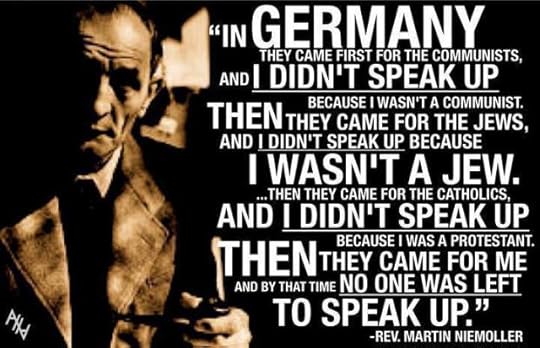
I am very afraid for my country’s future, particularly if the first week of this nightmarish presidency is any indication of what’s to come. I’m afraid for my husband (a Canadian immigrant), for my friends (many of whom are also immigrants and women and members of the LGBTQ community), and for millions of people I don’t even know. Because once the government comes for the Muslims, eventually they will come for ALL of us so-called “undesirables.”
It’s almost unbelievable, but it’s all happening again.
HITLER 2.0 IS HERE. THIS IS NOT A TEST.
Trump is trying to distract people with ridiculous claims and “alternative facts” – which are simply lies. His Inauguration crowds were NOT the biggest ever. The election was NOT somehow “stolen” due to voter fraud. Muslims are NOT terrorists.
But he will not misdirect me. He will not derail me. He will not intimidate me. Because now I am ANGRY. And I will not be afraid of this Tangerine Tyrant with his tiny-fingers and his tempestuous temper. I will fight back. I will gather my weapons – my words – and I will fight.
I will resist.
Weekly Goals
Set: Finish essay #3 and write essay #4, start research for Careers if You Like Music, write blog post about Christina Alexandra’s presentation to the San Diego Writers/Editors Guild meeting.
Met: I finished one essay, which you just read above, so let’s call that #3. I signed the contract for Careers if You Like Music on Friday. And I posted about Christina’s presentation here, if you’d like to learn more about writing romance.
Missed: I have not yet completed my week 4 essay, nor have I technically started researching the book. So…
Goals for Next Week
Start researching and writing Careers if You Like Music (due March 6)
Write essays #4 and 5
Continue writing on a daily basis, without fear
Participate in InCoWriMo – International Correspondence Writing Month!
What About You?
Got any goals for next week? Have you been tracking your words this year? Need some friendly advice or encouragement? Post your deepest, darkest fears – or just your goals – in the comments section!
Related Posts
 Confronting Zero: Accountability check-in #2017goals
Confronting Zero: Accountability check-in #2017goals
 Looking Ahead: Week 3 accountability check-in
Looking Ahead: Week 3 accountability check-in
 Let’s get accountable! #2017goals
Let’s get accountable! #2017goalsThe post Twitler’s first week (and an Accountability Group check-in) appeared first on Buttontapper Press.
January 24, 2017
Top 10 Takeaways: Christina Alexandra
Last night I attended the monthly meeting of the San Diego Writers and Editors Guild. The guest speaker was Christina Alexandra, a romance writer and California Dreamin’ writers conference organizer from Orange County. She spoke to the group about writing and publishing romance, and gave us lots of information about the industry and its authors.
Here are my Top 10 Takeaways from her speech:
10 – Romance is for everyone
Romance includes every genre – and it’s more than just heaving bosoms!
This is a stereotype that romance writers fight against, constantly.
Romance is, in fact, the biggest seller for ALL of the Big Five publishers. Approximately 49% of all novels put out by traditional publishers are categorized as romance. They keep the lights on!
9 – What makes a story a romance?
There are only two requirements for a story to be considered a romance:
The main focus must be on the couple (or threesome… or moresome).
There must be an “emotionally satisfying” ending (either a “HEA” = Happily Ever After, or “HFN” = Happy For Now).
8 – Choose your subgenre
Romances set in a time period after the 1950s are considered “Contemporary.” There is also a current trend for romances to be considered “Retro” if set during the time period between the 1950s and the 1980s.
Paranormal Romance is a huge subgenre, and typically features borderline erotica levels of heat. Shape-shifters are big within this subgenre, and include werewolves, dragons, and other creatures that can change back and forth into human form.
Another huge subgenre is the Old West Romance.
Regency Romance was recently considered dead, but is again making a comeback amongst readers. Regency refers to a very specific time period, from 1811 to 1820 in England, which was categorized by Christina as “the time period when George III was mad, but not dead, and his son was the Regent.” One of the most well-known examples of Regency writers is Jane Austen, who wrote romances as well as social commentary of her time.
7 – Choose your heat level
Guess what? It’s not all about the sex! There are, in fact, varying degrees of heat in romance novels, ranging from “sweet” (usually ending at a closed door) all the way to “steamy” (more graphic, but not quite erotica).
In romance, there’s something for everyone.
6 – Choose your book length
Word counts for romance novels can vary greatly, depending on the publisher and the subgenre in question. Many of Harlequin’s books are around 40,000 words. These are considered short, and are produced quickly. Paranormal romances are usually about 100,000 words, while historical romances range from 70-110,000 words. Avon and Harper Collins books typically range from 70-85,000 words.
5 – Choose your age level
Romance really is for everyone, because there are YA romances, too. These are typically more on the sweet side of the heat range, and are aimed at teens. Modern day examples are often set in dystopian societies, and all YA books typically address current issues for young people in relationships.
There’s also a new subgenre called New Adult (NA), which aims at readers aged 18 to 25. These books deal with topics a younger adult audience faces, like learning how to be or become an adult, discovering oneself and one’s sexuality. These books are often set on college campuses.
4 – Choose your gender and sexuality
Romance isn’t just for women. Nope! Approximately 12-20% of romance readers are male. And why not? Men enjoy romance in their relationships too, right? With books that often alternate between the female and male romantic leads, male readers can get a good glimpse into the minds of the female characters.
And let’s not forget: not all romance is about male/female pairing. There are tons of romance novels aimed at the LGBTQ rainbow of relationships, in addition to the more traditional stereotype of the Fabio book cover with a woman swooning in his arms. Hell, I’m not even sure how to classify Chuck Tingle‘s books (his most recent title, as of this blog post, being Domald Tromp Pounded In The Butt By The Handsome Russian T-Rex Who Also Peed On His Butt And Then Blackmailed Him With The Videos Of His Butt Getting Peed On), but they’re definitely in a category all their own.
3 – Do the research
Christina says she gets many of her ideas from her research into the Regency era. She attends Fashion Institute of Design & Merchandising Museum exhibits in LA, which rotate monthly, to explore period clothing and costumes. She also talks to museum docents about paintings from the time period, and explores the history behind them. She has even visited England to do extensive research, touring homes and exploring more of the British National Archives from that era. She also notes that there are lots of historic newspaper articles on file, with great tidbits you can use in your stories.
2 – Write what you know
Christina gets a lot of ideas from her job in law enforcement, though she typically doesn’t write about that particular setting. Since she writes Regency-era romance, she will use her experiences in different situations, and even bases her villains on people she doesn’t like. (Don’t we all?!)
1 – Read and write romance
The romance writing community is very welcoming. If you want to learn more about writing and publishing in the genre, be sure to check out Laurie Kahn’s 2016 film Love Between the Covers, a documentary featuring many of the writers behind the industry’s bestselling books. And if you’re a romance reader, be sure to check out The Ripped Bodice in Culver City (near LA) – the country’s only romance bookstore.
Related Posts
 Top 10 Takeaways: David Wogahn on Metadata
Top 10 Takeaways: David Wogahn on Metadata
 Top 10 Takeaways: Antoinette Kuritz, Founder of the La Jolla Writer’s Conference
Top 10 Takeaways: Antoinette Kuritz, Founder of the La Jolla Writer’s Conference
 Top 10 Takeaways: Jonathan LaPoma on Screenwriting
Top 10 Takeaways: Jonathan LaPoma on ScreenwritingThe post Top 10 Takeaways: Christina Alexandra appeared first on Buttontapper Press.

